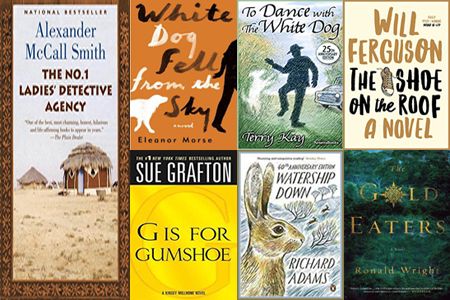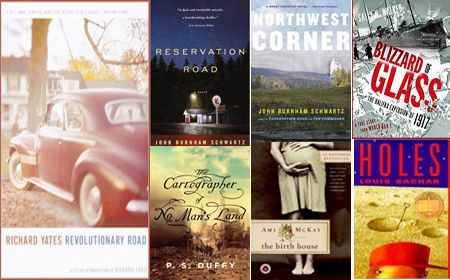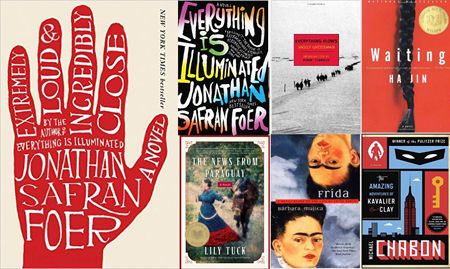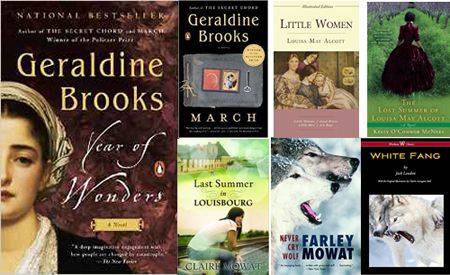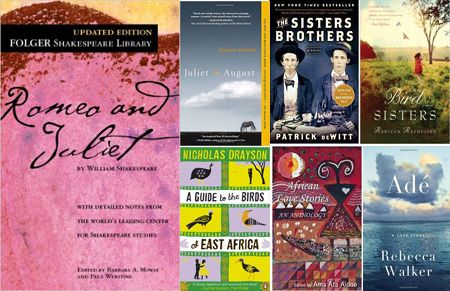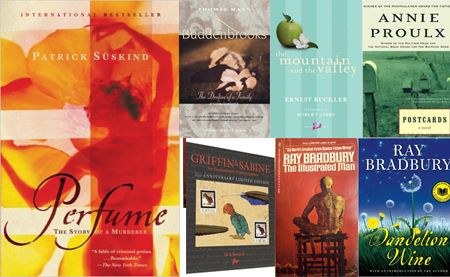Six Degrees of Separation from The Beauty Myth
It’s time again for the Six Degrees of Separation link-up, hosted by Kate at Books are My Favourite and Best and you can find complete details by clicking on the link.
This month, the start to everyone’s chain is The Beauty Myth: How Images of Beauty Are Used Against Women by Naomi Wolf. Wolf asserts that the “beauty myth” is an obsession with physical perfection that traps the modern woman in an endless spiral of hope, self-consciousness, and self-hatred as she tries to fulfill society’s impossible definition of “the flawless beauty.”
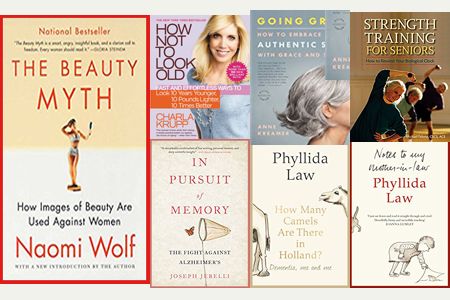
1. The beauty myth is probably the reason why I bought and read Charla Krupp’s How Not to Look Old: Fast and Effortless Ways to Look 10 Years Younger, 10 Pounds Lighter, 10 Times Better (plus its companion book How to Never Look Fat Again). Both of these actually had some great tips, some of which are beyond me now, but some that I still employ. Perhaps without them, I’d look older and fatter than I do.
2. Having played into the trap of the Beauty Myth with Charla’s books, I’ll try to fight the myth, and turn to Going Gray: What I Learned about Beauty, Sex, Work, Motherhood, Authenticity, and Everything Else That Really Matters by Anne Kreamer. This book was an account of the author’s decision to stop dying her hair, and let her natural beauty shine through (that’s her on the cover).
I read this several years ago when I didn’t know that I would be 63 and not yet grey. (It’s a gene from my mother’s side of the family.)
3. But grey or not, I am 63 and considered a senior by many, so Strength Training for Seniors: How to Rewind Your Biological Clock by Michael Fekete was a clearance purchase I made in an effort to feel younger.
I believe it was David J. Lieberman in Get Anyone to Do Anything who said that, if you want people to like you, move like a young person. Strength training is necessary for me to even try to do that.
4. Some studies show that exercise may be a way to lower the likelihood of Alzheimer’s. In In Pursuit of Memory: The Fight Against Alzheimer’s, Joseph Jebelli says that as the more of the world’s population becomes seniors, “Alzheimer’s is expected to affect 135 million people by 2050, overtaking cancer to become the second leading cause of death after heart disease.” (According to the Office for National Statistics, it already has in England and Wales.)
I haven’t finished In Pursuit of Memory yet, but I’m finding it fascinating. Alzheimer’s is such a difficult and misunderstood disease. It leads me to my next link.
5. In How Many Camels are There in Holland: Dementia, Ma and Me, Phyllida Law recounts the final months of caring for her mother, who suffered from Alzheimer’s, in the tiny Scottish village of Ardentinny – with the help of friends, local villagers, and her two daughters, actresses Emma and Sophie Thompson. Amazon says that running through the account are “anecdotes, memories and legends that form the fabric of every family.”
Unfortunately when I tried to read it a couple of years ago, I got no further than the first chapter and just couldn’t make sense of it. That probably says more about my state of mind at the time than it does about the book.
6. I was reading a hardcover copy of How Many Camels that I bought because several years ago, I greatly enjoyed Law’s Notes to My Mother-in-Law. A sweet & short memoir of sorts, written in the titular notes by the author to her mother-in-law, who was hard of hearing and yet wanted the day’s news and arrangements, it was a short and charming read. Both women sounded like people I’d like to know, and Phyllida’s respect and affection for her mother-in-law were evident.
So there you have it – a journey through some of my nonfiction reading for the past few years. I seem to be focusing on aging. Quelle surprise. What most concerns you as you get older?
P.S. Did you notice that the covers for all three of the books dealing with Alzheimer’s are white – fading away? A statement?
P.S. The links are affiliate links so I will receive a small percentage of any purchase you make after clicking through from this blog.

